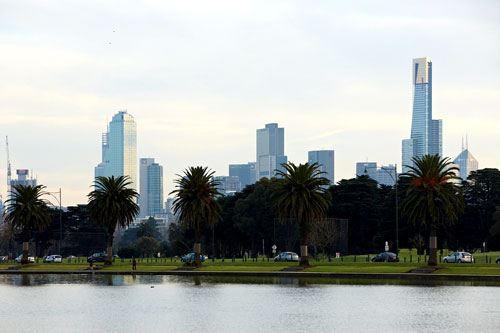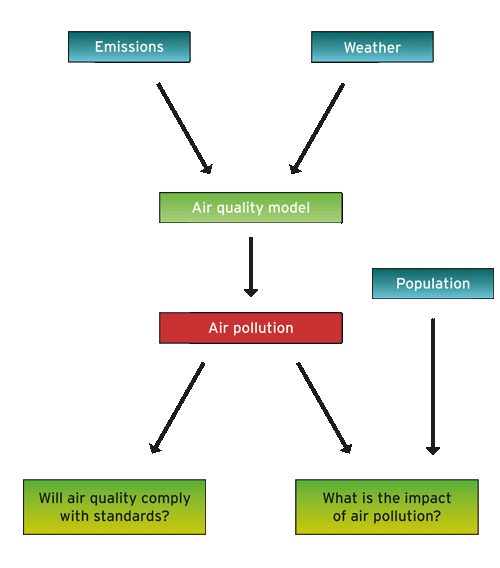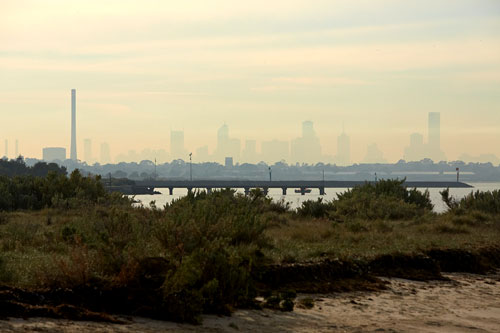
The ‘Future air quality in Victoria’ project explores the likely trends in air quality between now and the year 2030. The aim is to investigate future air quality issues in Victoria, to help us manage air pollution impacts over the next few decades.
How was the Future air quality report developed?
This four-year project involved a partnership between EPA and the Centre for Australian Weather and Climate Research.
Air pollution emissions in the year 2030 were estimated under three plausible future scenarios. Population change between a base year (2006) and 2030 was also estimated. Detailed weather information was taken from climate change studies, which covered both current and future conditions.
All this information was combined in an air quality model that predicts levels of air pollution.
The results were then assessed against current air quality standards and combined with population maps to estimate the likely level of impact on the residents of Melbourne and Geelong.
How the model was used to assess air quality impacts (text description of figure)

What were the key findings?
The report found that changes in vehicle technology and population are the main factors affecting urban air quality impacts over the next two decades.
By 2030, the total amount of exhaust pollution from the tailpipes of cars and trucks is expected to reduce, despite strong growth in traffic volumes. This is because improved technology is entering the vehicle fleet faster than the rate of traffic growth.
For emissions that are linked to domestic and business activities, significant increases are expected due to the 45 per cent population growth projected for the Melbourne and Geelong areas between 2006 and 2030.
The key pollutants of concern in the future are particles and ozone. These pollutants develop in the air from many different sources, not just road traffic. Although we have less of these pollutants now in Melbourne compared with the 1980s, current levels are occasionally high enough to breach air quality standards. As our population grows, the overall impact of these pollutants is likely to increase.
The good news is that for many other pollutants, including carbon monoxide, nitrogen dioxide and air toxics, levels are expected to reduce over time, giving us cleaner air to breathe.
Computer animations (movies) have been prepared for some pollutants. Click on one of the links below to see how changes in emissions will affect air quality in the future.
- View or save carbon monoxide (CO) animation (WMV 3.6MB; MP4 3.1MB; AVI 3.5MB)
- View or save nitrogen dioxide (NO2) animation (WMV 4.5MB; MP4 5.0MB; AVI 4.4MB)
- View or save particles (PM2.5) animation (WMV 5.8MB; MP4 8.9MB; AVI 5.9MB)
- View or save sulfur dioxide (SO2) animation (WMV 3.6MB; MP4 3.1MB; AVI 3.6MB)
How will the results be used?
The results of this study are being used for both Victorian and national air quality management projects. In Victoria, the findings will inform future reviews of air quality state environment protection policies. The results will also support the National Plan for Clean Air, which aims to improve air quality and community health across Australia.
